Many brands and content creators struggle to stand out and engage audiences effectively on social media platforms today.
With the rise of video content and the increasing importance of social search, those who fail to adapt risk becoming invisible in the crowded social media space. Traditional content strategies are no longer enough to capture attention and drive engagement.
This comprehensive guide equips you with the knowledge and tools to create compelling social media videos that capture attention, drive engagement and achieve your marketing goals.
Discovering video content in the era of social search
The way users discover and interact with video content on social media platforms, with social search at the core, has already evolved the way users interact with social content.
Unlike traditional search engines, social search algorithms are designed to surface content based on user behavior, preferences and engagement patterns within social networks.
This means social search doesn’t rely on assuming the user’s intent. The algorithm is very aware of what the search is looking for.
Understanding this concept is now crucial for brands looking to maximize the visibility and reach of their videos, especially for organic content.
Dig deeper: Why video is key to building brand identity and engagement
Mastering social search: Why and how to maximize your video content’s reach across platforms
The rise of social search brings important changes content creators must consider:
- Increased importance of engagement metrics.
- Greater emphasis on trending topics and timely content.
- Reduced reliance on follower count for reach.
- Higher potential for viral content from lesser-known creators.
- Need for consistent posting and audience interaction.
To use social search effectively, focus on producing high-quality, engaging content that encourages user interaction and aligns with current trends.
Alongside this, content must be well-optimized, ensuring keywords and vital hashtags are included as appropriate.
TikTok is getting a lot of attention for social search due to its “For You” page, targeted algorithm and built-in search features, but this shift is also happening on many other social platforms, such as:
- Instagram Reels: Built into Instagram, it works like TikTok by promoting short-form videos to a wider audience beyond just a user’s followers.
- YouTube: The world’s second-largest search engine, it uses past content interactions, search history and subscriptions to recommend content to users.
- YouTube Shorts: Uses social search features to recommend short-form videos based on users’ viewing history, interactions and searches.
- Pinterest: Uses visual search technology to help users discover content related to images they continue to evidence they are interested in.
- Snapchat: Uses social search in its “Discover” feature to surface relevant content and stories for its users, creating unique discover feeds for every user.
This is what is leading to the emergence of a search universe.
As audiences use different platforms at various stages, understanding the nuances of social search on each is key to tailoring your video strategy and maximizing reach.
A search universe analysis can help refine your content strategy to meet these needs.
Dig deeper: Is TikTok a search engine? Why meeting searchers’ needs matters more than semantics
Developing a holistic video strategy
Creating successful social media videos goes beyond just producing engaging content.
It requires a comprehensive approach that aligns with your overall business goals and target audience.
Let’s explore how to develop a holistic video strategy that sets you up for success.
Setting clear goals and objectives
Before you start creating videos, define what you want to achieve.
This will depend on how your audience is engaging with the platform and their expectations alongside what you are trying to achieve within your strategy.
It’s likely you are trying to achieve one of the following:
- Brand awareness: Increase visibility and recognition of your brand.
- Engagement: Boost likes, comments, shares and overall interaction.
- Lead generation: Attract potential customers and grow your audience.
- Sales: Drive conversions and revenue through your video content.
- Education: Inform your audience about your products, services or industry.
- Visibility: Gain presence on a social-SERP for relevant topic/conversation.
Clearly defined goals will guide your content creation and help measure success.
Identifying target audience and platforms
Understanding your audience is crucial for creating content that resonates.
By analyzing demographics and psychographics, you can create specific personas to identify which platforms will help you reach different audience groups.
Once you know your audience, choose the platforms that match their preferences and content goals.
Each platform has unique features and audience expectations, so pick the ones that best align with your strategic objectives. For instance:
- TikTok: Short-form, trend-driven content for a younger audience.
- Instagram: Visual content for a broad demographic, with Reels gaining popularity.
- YouTube: Long-form and short-form content perfect for education.
- LinkedIn: Professional content for B2B audiences.
- Facebook: Diverse content types for a wide age range, focusing on older groups.
To find out where your video content should appear, use GLIMPSE to see which platforms are popular for your topic.
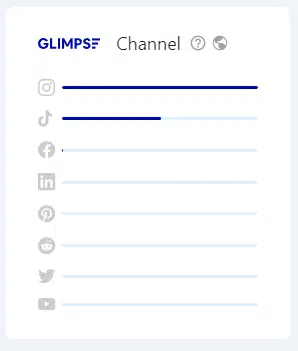

Here is a look at the “Channel Breakdown” from within Google Trends (Supercharged with Glimpse).
I’ve searched for “Hyrox Workout” and as you can see, Glimpse has identified that this topic is indexing favourably on Instagram and TikTok.
This could inform the platforms I choose to create content on in various ways.
I could decide to join the Red Ocean on these popular platforms (after all, that is where the conversation is already popular) or grow the conversation on a separate channel (I think YouTube and YT shorts would be a great choice).
Aligning video content with overall brand strategy
Your video content should be a cohesive part of your broader brand strategy.
Crafting a cohesive brand presence across your content strategy is essential for building recognition and developing trustworthiness.
For social content, make sure your videos consistently reflect your brand’s voice and values.
Use a unified visual style with consistent colors, fonts and design elements, but don’t stress over minor deviations. The key is to keep it clear that it’s your brand communicating.
A good tactic is to develop recurring series or themes that align with your brand identity. This will create a sense of familiarity and anticipation among your audience, a reason to click the notification icon to “On.”
JD Sports does this well on its YouTube channel by collaborating with content creator Chunkz and other influencers.
They create a series of videos that connect with their audience, building brand loyalty and encouraging users to subscribe to their channel.
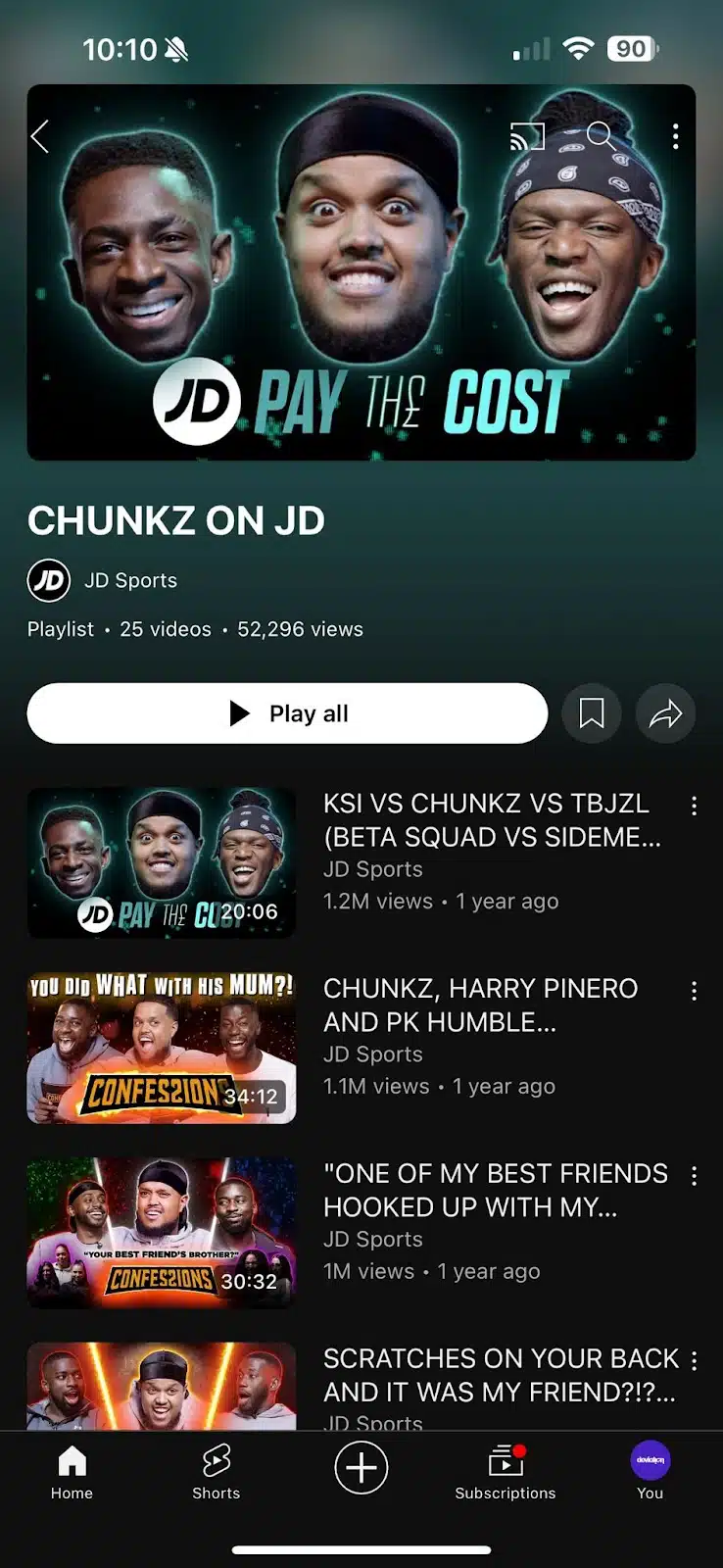

As you create content for different platforms, aim for a consistent experience across your messaging and styles.
Consider collaborating with influencers and content creators. Encourage your community to contribute. Just make sure the content aligns with your brand.
A well-rounded video strategy will help you produce engaging content that achieves meaningful results for your brand.
Get the newsletter search marketers rely on.
Video creation essentials
Creating compelling social videos involves three key stages:
- Pre-production.
- Production.
- Post-production.
Each phase plays a crucial role in crafting content that resonates with your audience and aligns with your strategy.
Pre-production
- This stage sets the foundation for concept development, scripting and planning.
- Consider your video’s purpose, target audience and platform-specific requirements.
- Use a search brief to ensure the video is effectively optimized for search, from the outset. Ultimately, you want to outline your key messages and visual elements to guide your content.
Production
- Focus on capturing high-quality footage based on your content needs.
- While professional equipment can enhance your video, many smartphones now offer great video quality.
- Pay attention to lighting, composition and audio to ensure your message comes across clearly.
- Tailor the production quality to fit the platform. What works for a 4K film may not suit a 15-second TikTok.
- Meet the expectations for each platform to avoid disconnecting from your audience.
Post-production
- Bring your vision to life through editing.
- Add captions, music and effects to develop better engagement, keeping in mind platform-specific best practices.
- This stage is crucial for optimizing your video for social search, which we’ll explore specifically in the next section.
The key to successful video creation is balancing quality with efficiency.
With experience, you’ll create a workflow that helps you consistently produce engaging content, meeting audience expectations and including what’s needed in each piece.
Top tip: Use AI to find ‘highlights’ from long-form videos for short-form recycling
For social media content, you can reuse and repurpose material from YouTube, podcasts, webinars and public speaking events.
Extract key insights from your long-form content to create engaging snippets and teasers for social media.
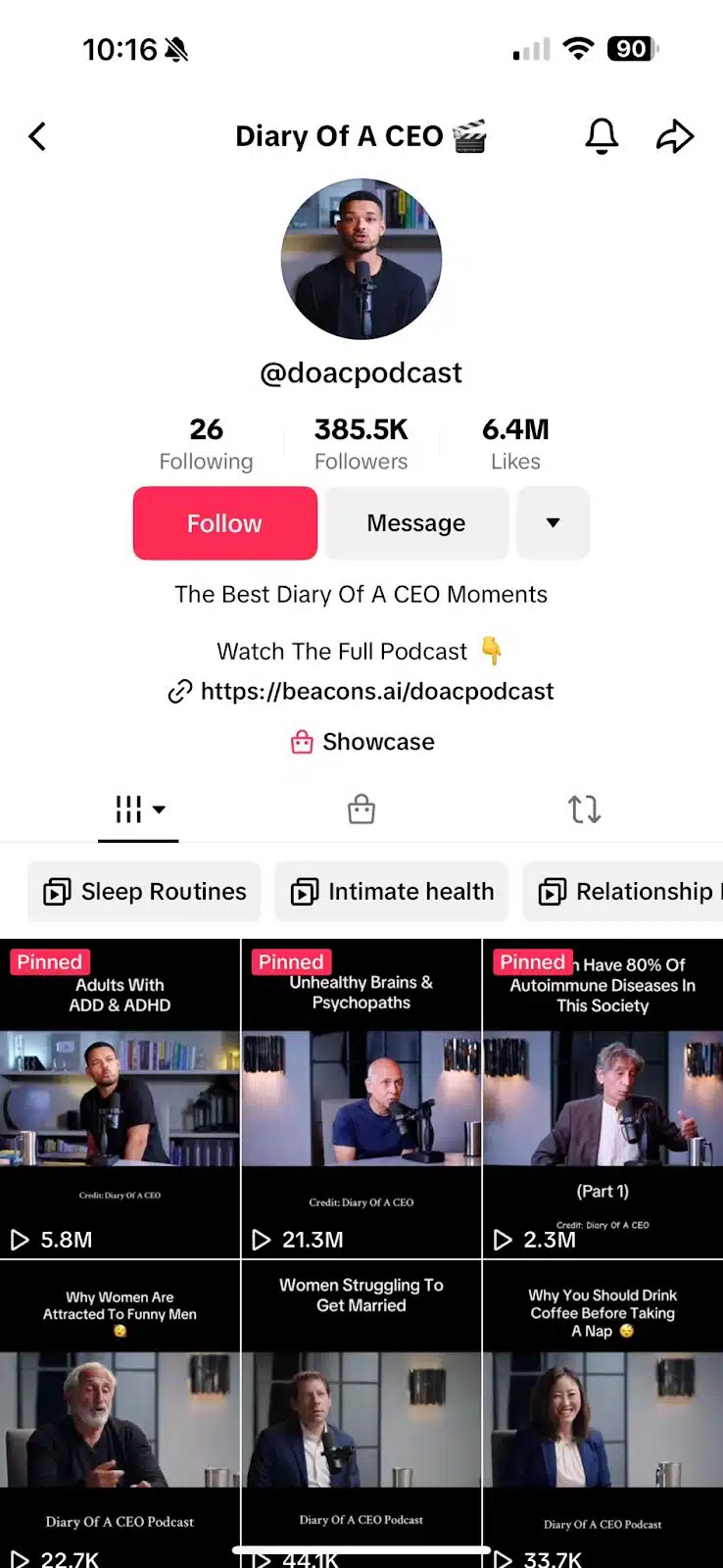

This strategy was adopted by Steven Bartlett in his podcast, “Diary of a CEO,” and popularized as the “Gary Vee” method after marketer Gary Vaynerchuk brought it to the mainstream.
Tools like Canva and Wistia, along with new AI tools, can automatically find highlights in your content. This lets you quickly create multiple social media pieces by repurposing your existing content.
In Wistia, go to the Video Editor, click Highlights and it will do the work for you. Canva provides a similar feature.
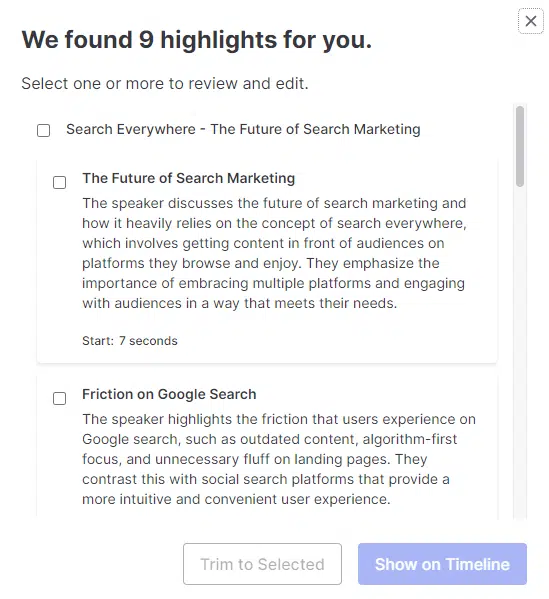

Optimizing videos for social search
Maximizing your video’s visibility in social search is essential for reaching a larger audience and boosting engagement.
We can borrow a lot from traditional SEO tactics here and repurpose them for social search.
To optimize your video content:
- Use relevant keywords in titles and descriptions, ensuring they match the video’s content and spark interest.
- Add trending but relevant hashtags to improve discoverability without misleading viewers.
- Incorporate current trends or challenges to boost your video’s reach, as social algorithms favor timely content. Just make sure to stay authentic and align trends with your brand’s voice.
- Include closed captions for accessibility and extra text for algorithms.
- Focus on a strong thumbnail to boost click-through rates.
- Encourage interaction with questions or calls-to-action to improve rankings in social search.
- Regularly analyze video performance to understand what resonates with your audience and refine your content strategy.
While optimization is key, prioritize creating high-quality, engaging content. Balancing optimization with authentic value for viewers will lead to the best results.
Just like with traditional SEO, focus on building relationships with your audience, not just algorithms. Prioritize the user experience!
When your videos perform poorly: Delete and re-edit
Not seeing the results you expected?
Editing content used to be difficult, especially on TikTok, often requiring a fresh start.
Now, platforms are adopting a “fail fast, test and learn” approach, making updating and improving content easier.
TikTok, for example, now allows you to “Delete and Re-Edit” instead of just deleting your content, a feature YouTube has offered for a while.
This allows you to head back into your drafts, find the content and edit away, ensuring you can optimize your content and republish.
This is a game changer for that test and learn approach and should better enable creators to optimize for social search on the platform.
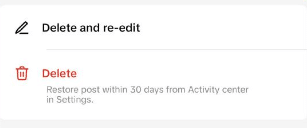

Measuring success
You must understand how your content performs to refine your content strategy and maximize impact.
Track the right metrics and interpret data effectively to improve and achieve better results.
Key performance indicators (KPIs)
KPIs can vary by brand and strategy, but here are some important ones for social search content:
- Views and reach: Measures visibility of your video. Important but should be considered with other metrics.
- Engagement rates: Includes likes, comments, shares and saves. Shows how well your content resonates.
- Watch time and completion rates: Indicates viewer interest and content quality.
- Click-through rates and conversion metrics: Essential for videos aimed at driving actions.
- Follower growth: Reflects how well your video attracts new audience members.
Tools for tracking performance
- Platform native analytics: Use YouTube Analytics, Facebook Insights and TikTok Analytics for detailed performance data.
- Third-party tools: Hootsuite, Sprout Social and Buffer offer cross-platform analytics and advanced reporting features.
Interpreting data
- Identify patterns: Look for trends in top-performing content, such as themes, styles or posting times.
- Compare benchmarks: Set realistic goals by comparing your performance against industry standards.
- Adjust strategies: Do more of what works and less of what doesn’t.
- Audience insights: Pay attention to demographics and behaviors to ensure you’re reaching your target audience.
- A/B testing: Experiment with different approaches to optimize content based on results.
Balancing data and feedback
Use metrics to guide your strategy, but balance quantitative data with qualitative feedback from your audience. This approach helps create content that resonates and achieves your goals.
Case study: Makeup tutorials by Jade Rain
Let’s see these principles in action with a real-world example from the beauty industry.
@jaderainbeauty Stop struggling with red lips! These tricks help me get a perfect pout every time. Did you know you have 2 lip lines? Lip color Red from Graftobian Best lip brush ever Lip Dagger from Bdellium #lipsticktutorial #lipstickhack #lipstickhacks #redlipstick #redlips ♬ original sound – jaderainbeauty
- The video starts with an effective hook that addresses a pain point for the target audience (Clown Lips when applying Red Lipstick
- Captions and descriptions effectively relay the message that the presenter is discussing within the video, sending the necessary signals to the platform (TikTok).
- The video includes visual and audio “show and tell” instructions which makes the video engaging and educational.
- Finally, the video effectively uses relevant hashtags, which, when partnered with the other factors mentioned, have led to the video being used as a search highlight feature for “how to apply lipstick” on TikTok.
Video content is a powerful tool for connecting with audiences and achieving marketing goals in today’s social media landscape.
By embracing the strategies outlined in this guide, you can create impactful content that resonates with viewers and drives results:
- Understand social search: Learn about its role in video discoverability and tailor your content strategy accordingly.
- Adopt a holistic approach: Set clear goals, identify your target audience and maintain consistent branding across platforms.
- Master the creation process: From pre-production planning to post-production optimization, each stage is crucial for producing high-quality content.
- Optimize for platforms: Adapt your content to platform-specific algorithms and user behaviors to maximize reach and engagement.
- Measure and refine: Use analytics to track performance and continuously improve your strategy.
Remember, successful video content prioritizes audience needs while aligning with your brand’s objectives.
As you implement these strategies, stay adaptable and open to emerging trends. The social search landscape is ever-changing and your ability to evolve with it will be key to long-term success.
Dig deeper: How advertisers can capitalize on vertical video
Contributing authors are invited to create content for Search Engine Land and are chosen for their expertise and contribution to the search community. Our contributors work under the oversight of the editorial staff and contributions are checked for quality and relevance to our readers. The opinions they express are their own.
